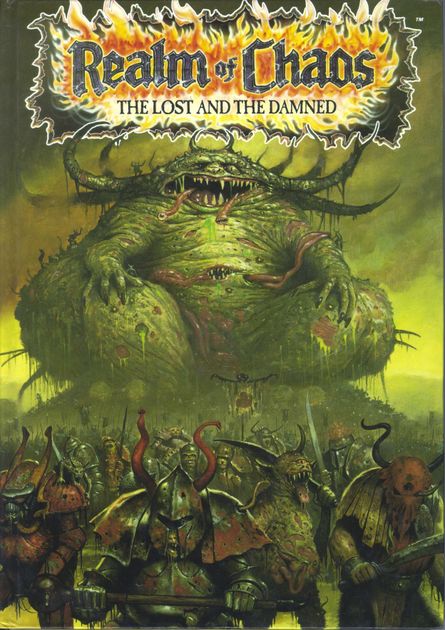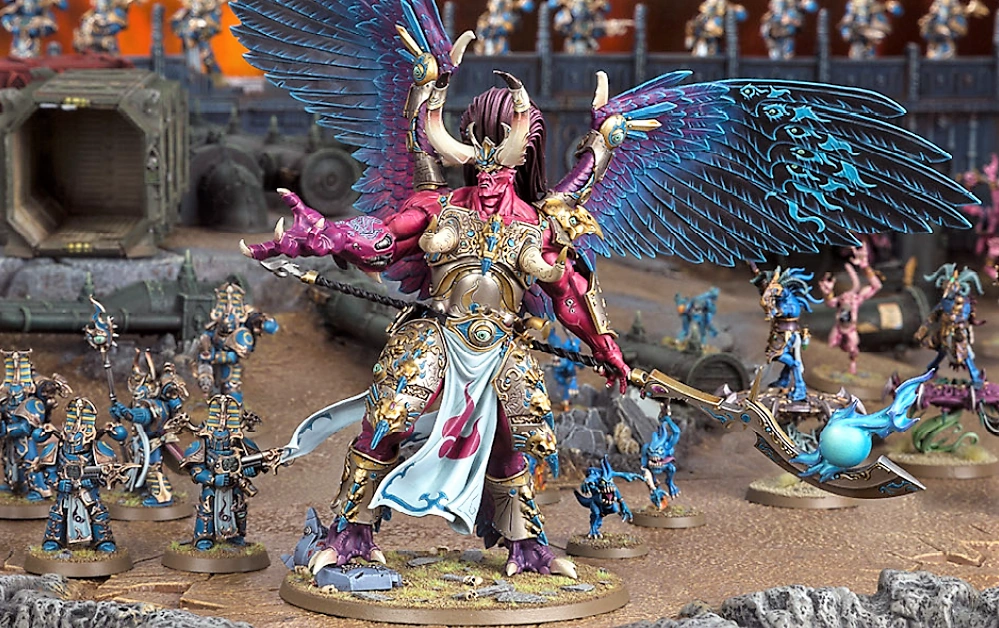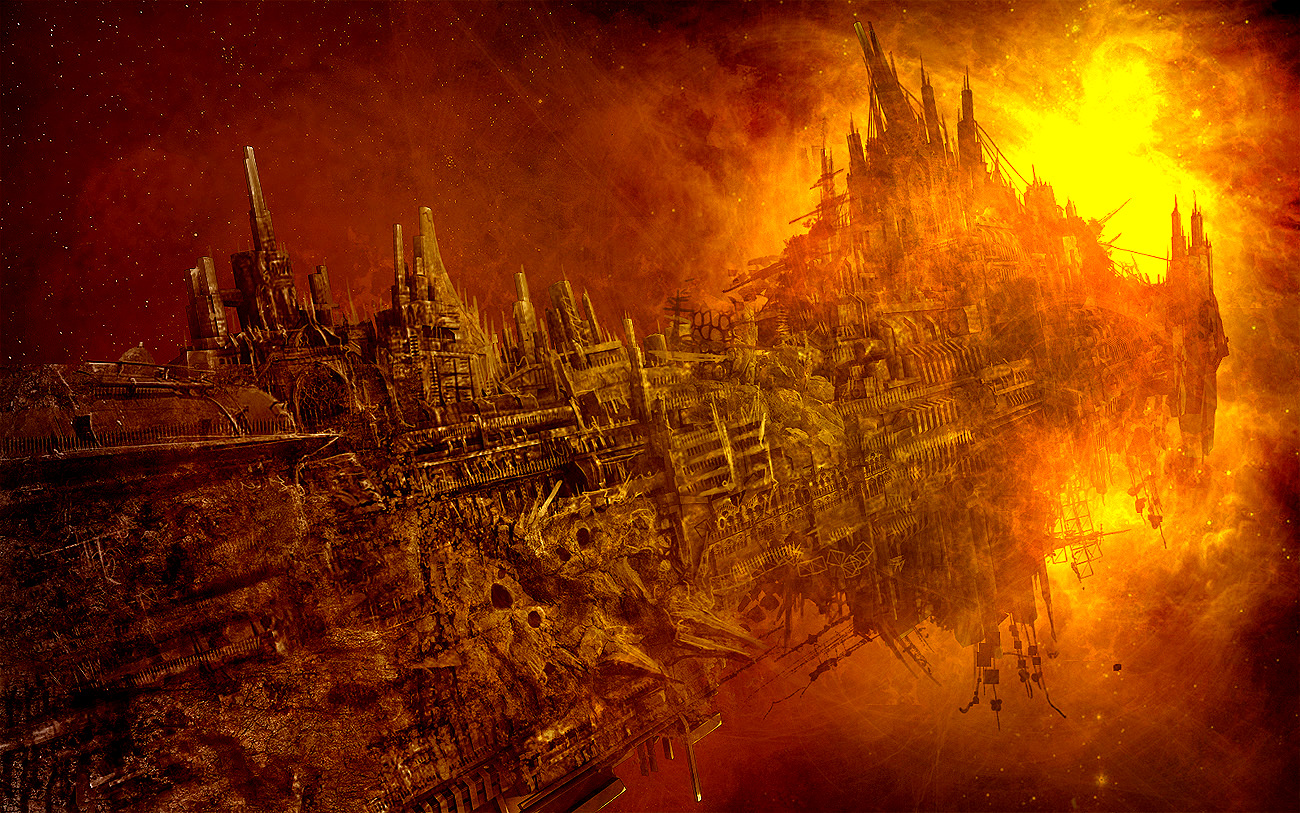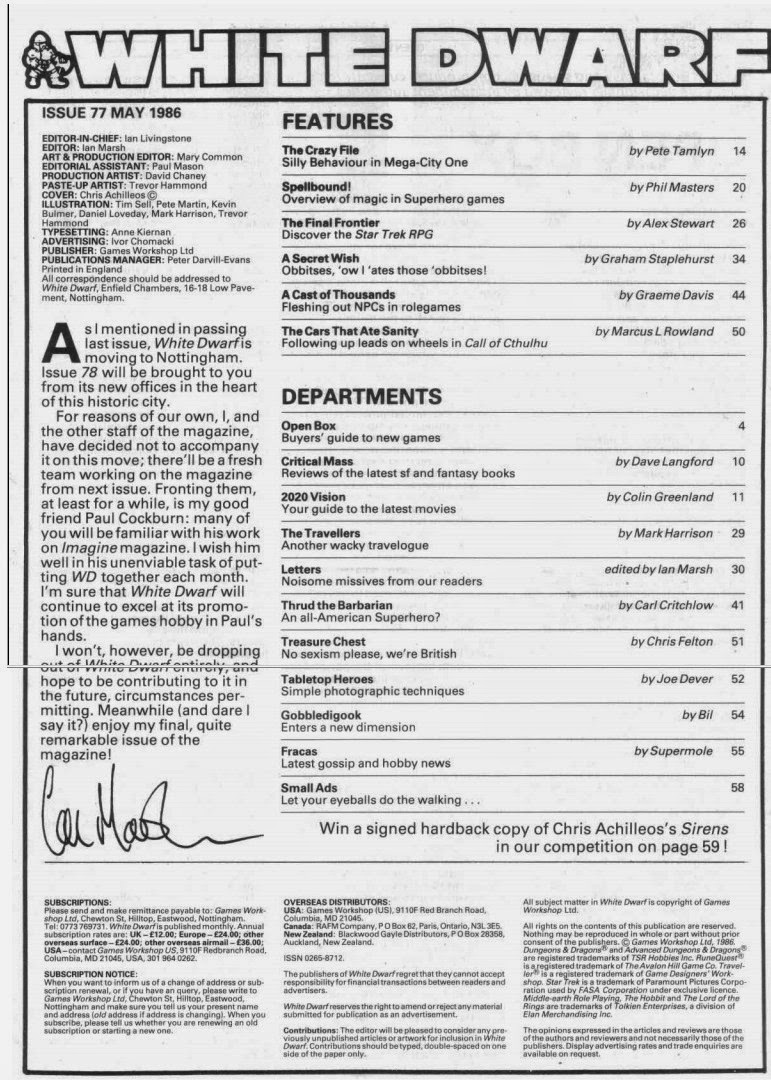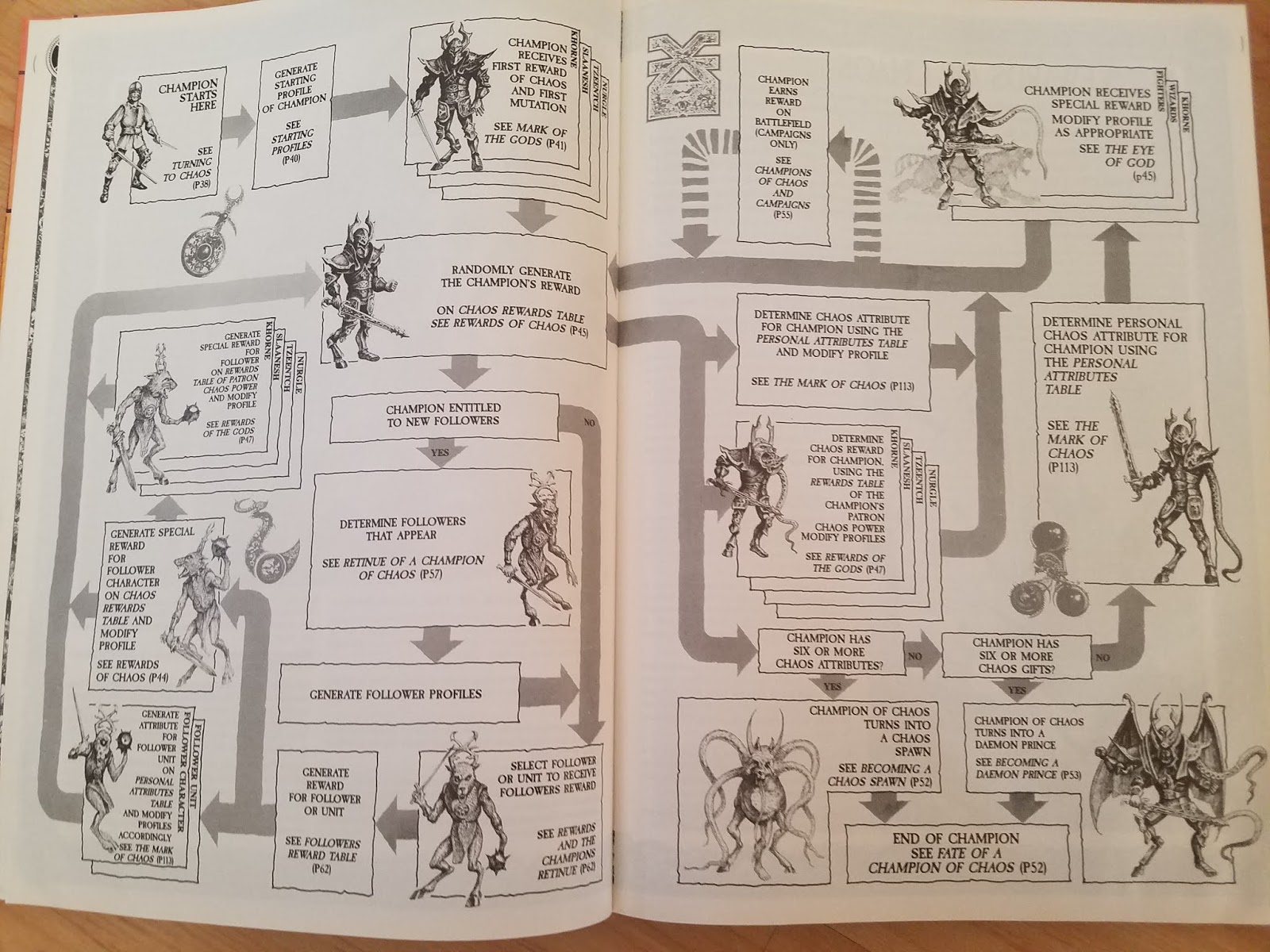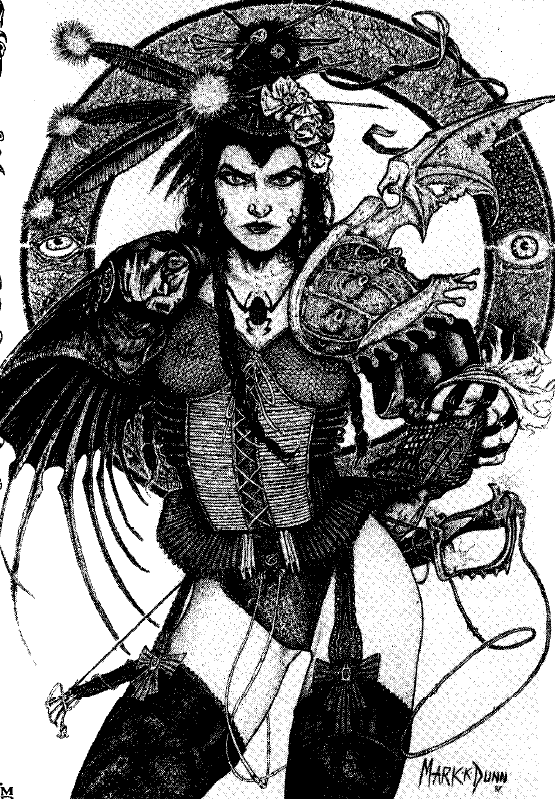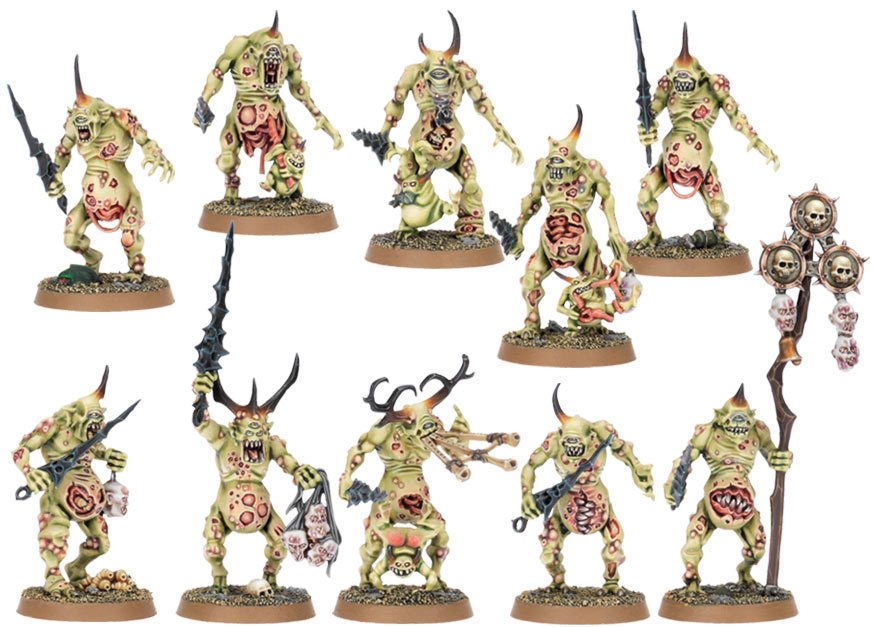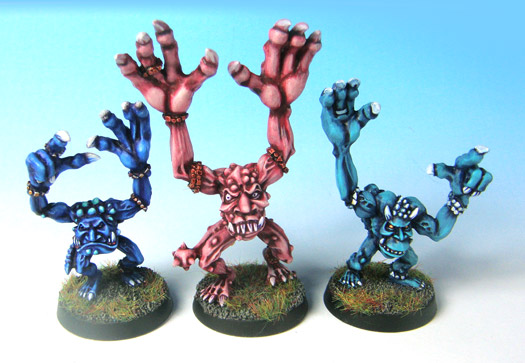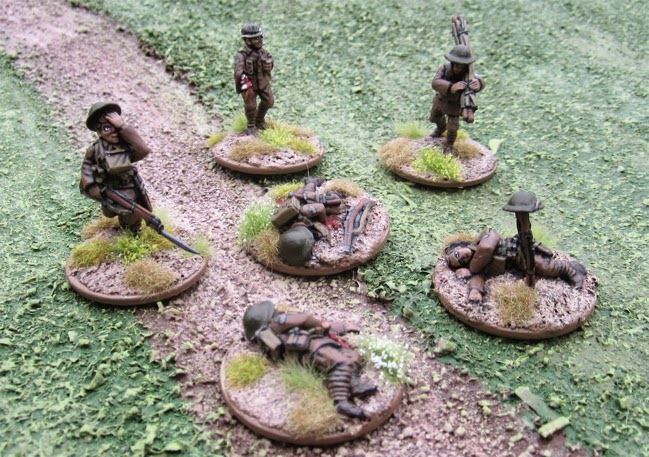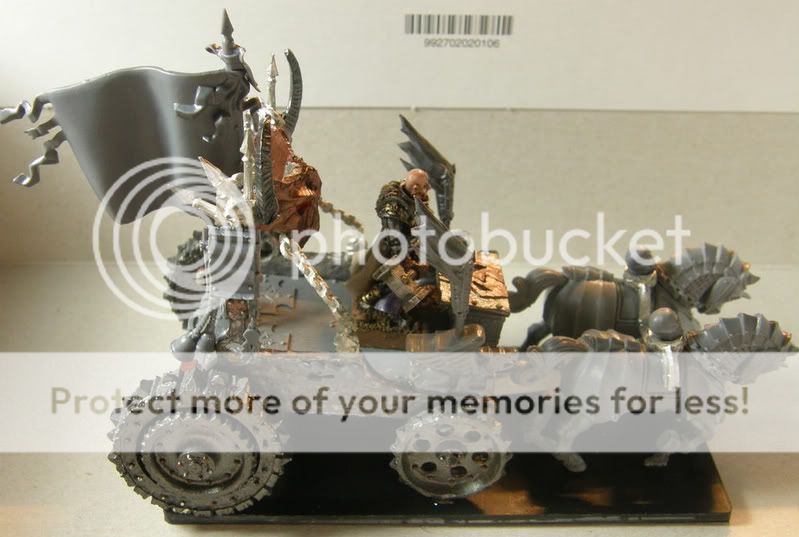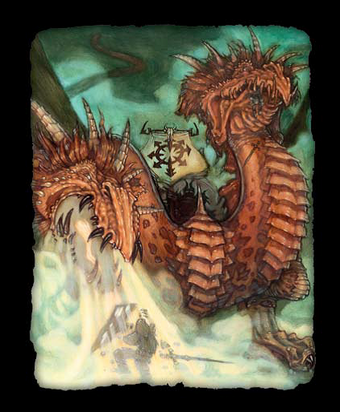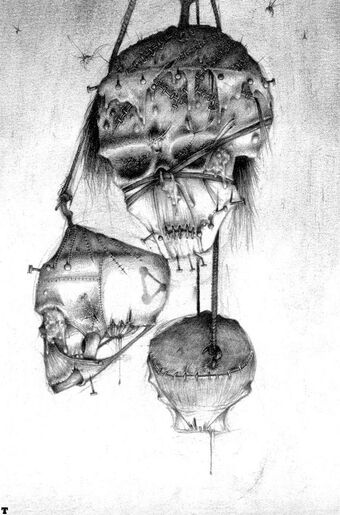The other thing to remember is that 40K was a fork from second edition, but the people writing this book seem to think you can re-use rules between 40K and 3rd edition?
I want to start our comparison here:
The Lost and the Damned, pp. 252, Chaos Renegades
but we'll also be comparing vs.
Slaves to Darkness, pp. 231, Chaos Renegades
These two sections are weirdly redundant and inconsistent given that they seem to have been written by the same people?
StD is by
https://en.wikipedia.org/wiki/Bryan_Ansell, Mike Brunton and Simon Forrest with additional material by Matt Connell, Graeme Davis and Rick Priestly.
L&D is by
https://en.wikipedia.org/wiki/Bryan_Ansell and Rick Priestly
Because
http://tgdmb.com/viewtopic.php?t=55491 - I think AH maybe knows who the hell these people are?
So I don't have a good explanation for the oddly specific ways these two sections are different.
They both start with generic explanations of how chaos marauders work
a bunch of chaos dudes jump on a shoddily maintained faster than light vessel and go find someone to mess with at random.
The two descriptions aren't contradictory so much as different in emphasis and tone? It really reads like different people describing the same underlying ideas.
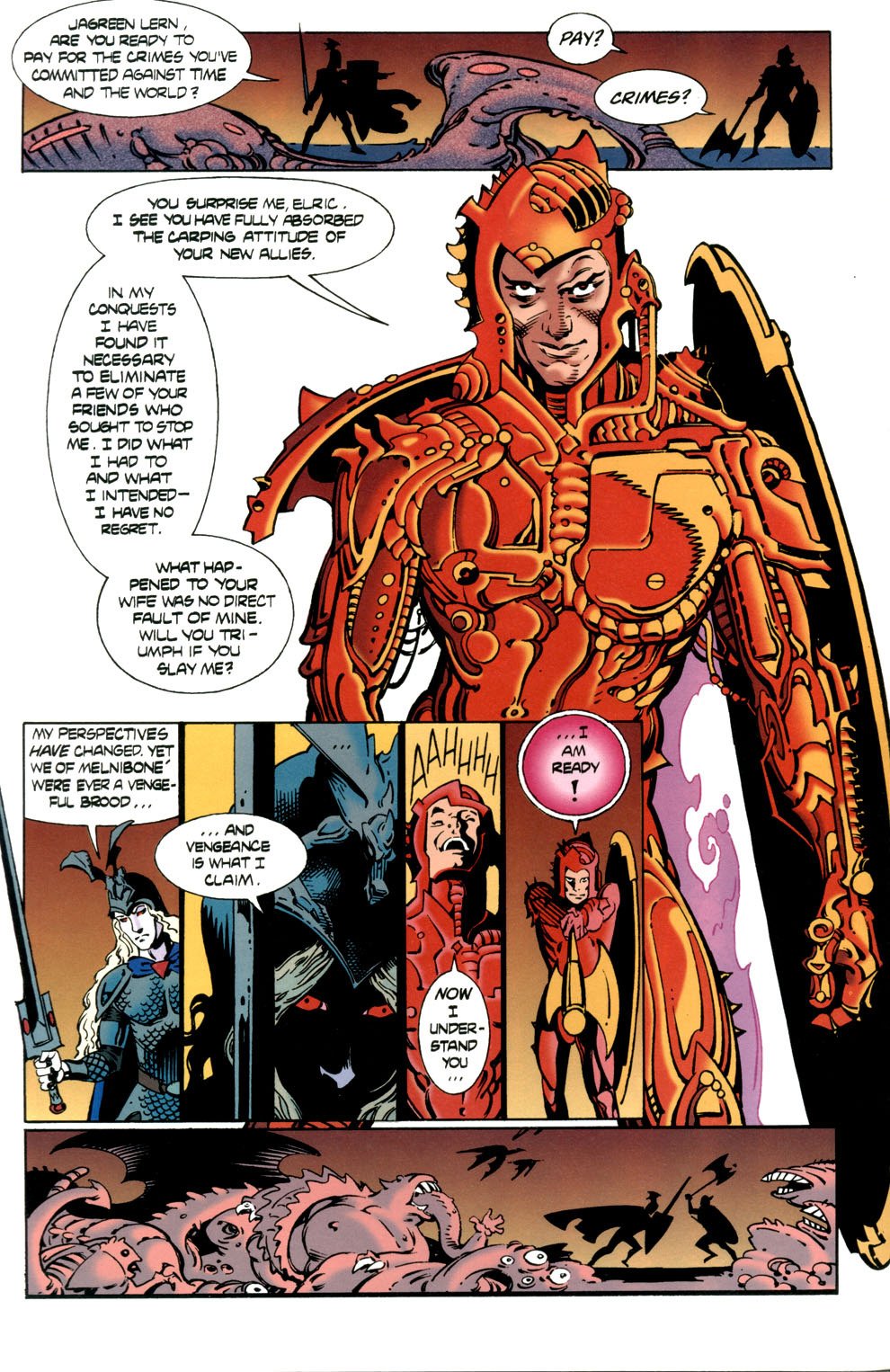
For those who don't know, the end of the classic Elric saga has the great army of Chaos show up with a bevy of chaos champions who have lost their humanity and powered up their mutations with human sacrifice. Xiombarg's flunkies in the middle Corum novels have basically the same schtick, complete with randomly having gotten horse heads and suchnot.
In Warhammer, you play guys aspiring to be Jagreen Lern, and in 40K you play the same guys
in space!
Anyway both StD and L&D introduce the concept fine but you certainly don't need both intros.
Then things start to diverge, and hard.
Each book includes a similar but divergent cookbook description of how to generate the corresponding rewards, units, and etc.
L&D
almost entirely uses WH40K-specific charts.
StD
almost entirely references you back to the WFB charts, occasionally remembering to tell you that dwarves are squats, elves are dark eldar, etc.
L&D and StD both have a series of charts and point costs for either generating a chaos renegade warband from scratch (or taking a warband you've been using in a campaign and slotting it into your army.)
The base cost is:
StD: 60, +30/reward, +10/follower, +10/follower-reward, +cost of equipment
L&D: 200 for D4 rewards*, +200/4 rewards,
seemingly inclusive of retinue and equipment.
* I assume that the first 2 rewards aren't counted as rewards, but they don't actually say this.
The StD gets followers every
other reward (but might get two rolls), while the L&D gets followers every roll.
StD followers show up with rolls on various equipment charts, while L&D followers show up with a D6 worth of equipment points, plus standard equiment for their squad.
but, L&D followers are bullshit losers showing up in groups of 1D3 while StD followers show up in groups of 2D6 if their grunts, can be squats or zoats or entire squads of space marines.
I think that a StD retinue with 6 rewards is going to come out
significantly stronger but also costing more points? Also it will be way more random because in L&D you might get an assassin or psyker-lord for 10 points, or you might get some gretchen for 10 points each; and then you'll be rolling on equipment tables for them while in StD you get 1D6 points to
spend on equipment, which is still random (frankly not as good).
Relevant to Frank's point, in L&D it thinks you will
default to rolling on the fantasy army followers list, while in StD it think you will do this
occasionally in order to give your chaos warband additional flavor. L&D has a very-slightly-rejiggered fantasy follower table. This is of course an issue because WH40K is not based on the same engine! Occasionally, L&D reminds you to ignore the +X values after mental statistics that WFB 3rd edition stat blocks sometimes remember to have (and sometimes don't.) StD has a similar problem but it's not as severe - as a minor example, you might get a rod of command which refers to various manouevre rules that
I don't think 40K had because they were specific to WFB 3rd and not WFB2nd on which 40K was based? I'm not 100% sure on that one.
What's really weird is that the references all go forward in time. StD is constantly telling you to look stuff up in the (as yet unpublished) L&D, but L&D hardly ever does the reverse (the major exception being the actual descriptions of the chaos attributes.) So for example, if you wanted to make a Thousand Sons chaos marauder, StD tells you to look up the Tzeentch stuff in L&D and work from there. L&D never bothers to tell you that Slaanesh marines are in the previous book because they don't seem to entertain the possibility that you'd use these warband rules for Slaanesh champions!
My big complaint - and it is significant - is that having both books and wanting to have a Slaanesh warband and a Nergal warband duke it out, I have no idea where to start.
I'll begin with a fairly simple issue. The follower chart in StD specifies that you might get a Thousand Sons devastator squad - ka-ching! - and to look that up in L&D.
The Tzeentch Renegades army list in L&D only has Thousand Sons tactical squads in it. These are pre-rubric Thousand Sons who give bonus magic points to adjacent units instead of being dust fused in armor.
So, on that topic, we then get Death Guard and Thousand Sons army lists
except we don't. Instead, we get Chaos Marauder army lists that
only get champions instead of any usual traitor legion personalities! Furthermore, there seem to be no rules for summoned demons or possessed in these armies, which I'll return to in another post.
The heavy equipment in these armies is limited by number of champions rather than by number of techmarines, no-one gets rolls on equipment tables, points costs are moved around in strange and random ways, and for some reason both armies get ork freebooters. Pages 264 and 276 are
exactly the same.
This picture shows up twice, once at the bottom of each:

Likewise, pp. 265 and 277 differ only in having swapped art for the predator tank in the corner.
But the big difference between L&D and StD is that the L&D armies have totally different units in them, including just a couple of space marine options - terminators and generic chaos marines, and either thousand sons or death guard depending - a few minor demons like nurglings, and the 40K beastmen, who I'm pretty sure are broken.
I know that the relative value of T, wounds and armor saves and such swung wildly prior to 40K 3rd edition, but for 15 points you can get a beastman (of either Tzeentch or Nurgle) with T5, 2 wounds, and a plasma pistol. In StD, the beastmen get explosive collars and need to be handled by tech marines. Either version has lousy morale, so you'll want to buy some independent champions at 100 points each because I think in this version they could give their leadership to squads? They're hella random, though.
Interestingly, L&D has hardly any psykers. Thrall Wizards are a 40K unit but they use WFB 3rd edition spell casting rules (I think), for example.
The whole 40K section of this book is a letdown, because you don't have enough material compatible with either version of the rules to make comparable armies of all four chaos gods possible. The omission of a full army list for either thousand sons or death guard is particularly irritating, because these chaos renegade army lists are highly repetitious, and they're wasting
tremendous amounts of space. The army list entries in StD generally fit four or five squads to a page, while L&D only fits one or two - and several pages are just straightup duplicates between the two army lists.
Chaosium rules are made of unicorn pubic hair and cancer. --AncientH
When you talk, all I can hear is "DunningKruger" over and over again like you were a god damn Pokemon. --Username17
Fuck off with the pony murder shit. --Grek
